by Thomas Döhne
Patan Durbar Square in the centre of Lalitpur, Nepal, is historically, culturally and in religious terms one of the most important cultural heritage sites in the Kathmandu Valley. It is a holy Hindu site, a place where locals meet, and a popular tourist destination. After the devastating earthquake of 2015, tourism contributed to its reconstruction.
In a historical perspective, Patan Durbar Square was the palace complex of the Malla kings who ruled over Lalitpur from the 14th to the 18th century. Its prominent centre is the Krishna Mandir, a temple dedicated to Lord Krishna who is worshipped as an incarnation of Lord Vishnu. The temple was built in the 17th century by King Siddhinarsingh Malla. It is characterized by its multi-level structure and intricate stone carvings depicting scenes from the Mahabharata and the Ramayana, two of the most important epics in Hinduism.
Reconstruction thanks to tourism
In 2015, a devastating earthquake severely damaged several monuments, among them the Krishna Mandir. The costs of reconstruction of Patan Durbar Square amounted to about 40 million euro. The money was raised through joint efforts by the government, UNESCO, international donors and local contributors. The restart of tourism, which after the earthquake had been down for more than a year, has also contributed significantly. Today, European and other Western tourists must pay ten euros to enter the temple complex.
Thanks to the elaborate restoration works, the architectural and spiritual heritage of the square could be preserved. A key aspect was the use of traditional construction materials and techniques, respecting the traditional methods of the Newar craftsmen. The craftsmen from the Kathmandu Valley were guided by conservators and put in charge of reconstructing the stone and wood carvings, from pillars to filigree figures of gods.
In the restoration works, the Kathmandu Valley Preservation Trust, the Patan Museum Development Committee and the Department of Archaeology closely collaborated with local architects and craftsmen. “Local people had one common objective – to preserve the cultural heritage – and we got a lot of help,“ said Raju Roka, project manager of the Trust. “The bricklayers we contracted were very experienced. Their skills had been passed on to them by their ancestors.“ The stone blocks of the temple were diligently reassembled to preserve the original design and the continuity of its spiritual and artistic essence. At the same time, the process allowed Newar craftsmen to reconnect with their cultural heritage.
Patan Durbar Square in new splendor
The Patan Durbar Square is today again a place where spiritual devotion, cultural expression, and tourism come together. Most of the year, it is mainly devotees from Patan itself who spend time at Patan Durbar Square. For Hindu devotees, Krishna Mandir is of great spiritual importance. Their spirituality and tourism at the square form a unique blend, benefitting both worshippers and visitors. At the same time, the square has become a symbol of resilience and local commitment.
The common space is conducive to respectful interaction, with spirituality enhancing visitor experience and tourism supporting the vibrancy of the site. Tourists, many of whom are not familiar with Hindu beliefs and practices, are invited and guided by local people or self-appointed guides to witness temple rituals and ceremonies with respect and from an appropriate distance, and to take photos if they wish to. However, non-Hindus are not allowed to enter the temples as such.
Especially in the evenings, amidst the temples illuminated by kerosene lamps, the ringing sound of temple bells, the mantras recited by priests and the rituals performed by devotees, spending time at Patan Durbar Square feels like immersing oneself in Nepal‘s vibrant spiritual heritage.
Festivals as special occasions
A special event is Krishna‘s birthday (Krishna Janmashtami) in August or September, according to the Gregorian calendar. Every year, on this occasion, thousands of devotees come together at the square, which is brimming with religious ceremonies, devotional music, and a vibrant atmosphere of collective worship. This deep feeling of spirituality gives foreign visitors a very intense experience. Travellers can enjoy the hustle and bustle of the traditional festival and the busy street life of Lalitpur.
In addition to tourists, many pilgrims from other parts of Nepal and from India come for other festivals such as Shiva Ratri in February/March. On this occasion, they usually visit Nepal’s holiest site, Pashupatinath, and often also other holy sites like the Mukhtinath Temple in Mustang, the Janaki Temple in Janakpur, and Patan Durbar Square. The square is a destination in South Asian tourism not only as a holy site, but also as world cultural heritage, so the distinction between devotees and tourists is often blurred.
Municipal management challenge
As the temple complex is located in a densely populated urban area, festivals at the square can place considerable strain on local infrastructure. Major challenges include visitor management as well as waste and traffic management. The municipality and police closely cooperate with the „guthis“ (religious foundations) and „tol samitis“ (street committees) to ensure a safe and orderly procedures. This includes the installation of well-placed signboards, mobile waste bins, drinking water containers, and toilets, as well as information booths where volunteers are posted to help visitors with practical information. Volunteers also help to clean up after the festival.
At Patan Durbar Square, local people’s involvement, the spirituality of the devotees and tourism complement each other. Local people and worshippers preserve the character of the square as a holy site and meeting place while tourism supports its preservation and allows visitors insights into Nepal’s religious and cultural heritage.
Thomas Döhne is a journalist and expert in development cooperation, specialised in South Asia.


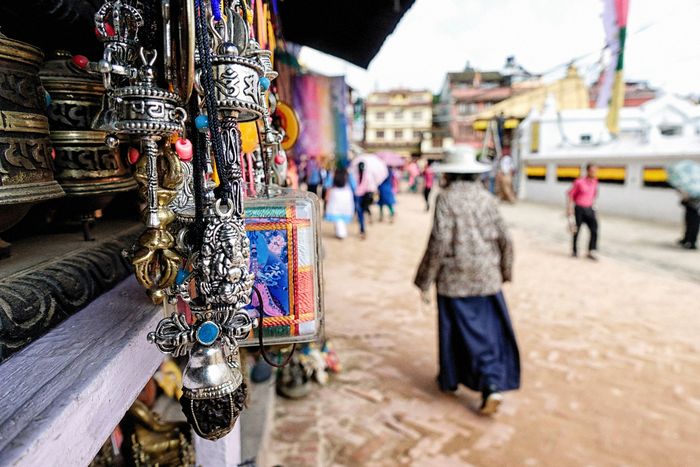
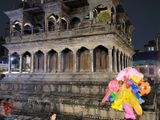
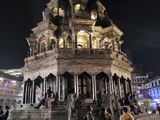
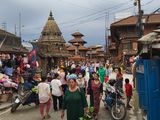
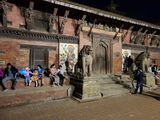
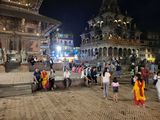
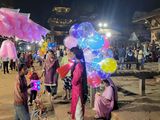
![[Translate to english:] Nepalesische Reiseleiterinnen](/fileadmin/tourismwatch/_processed_/3/2/csm_3-Titelbild__c_Sasane_9954087285.jpg)
![[Translate to english:] Person mit braunem Karton mit Aufschrift](/fileadmin/tourismwatch/_processed_/f/7/csm_cody-pulliam-GGKVGSkKIzM-unsplash_2__3191338c2b.jpg)
![[Translate to english:] Asiatische Kinder mit Festtagsbekleidung](/fileadmin/tourismwatch/_processed_/4/4/csm_visual-karsa-FOkR1eMQmOY-unsplash_527f54b3ac.jpg)